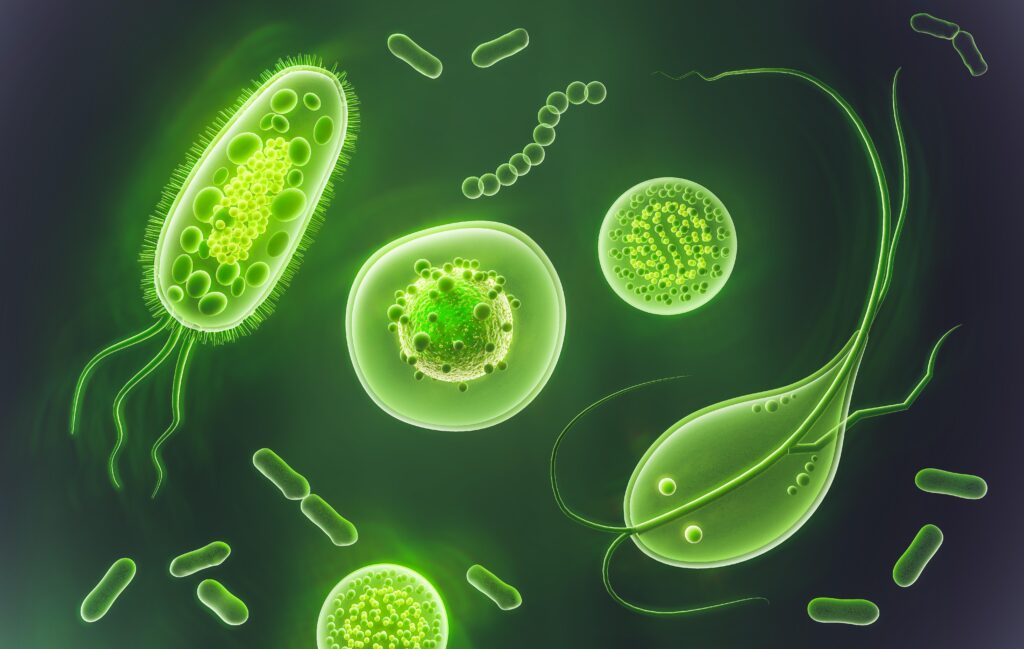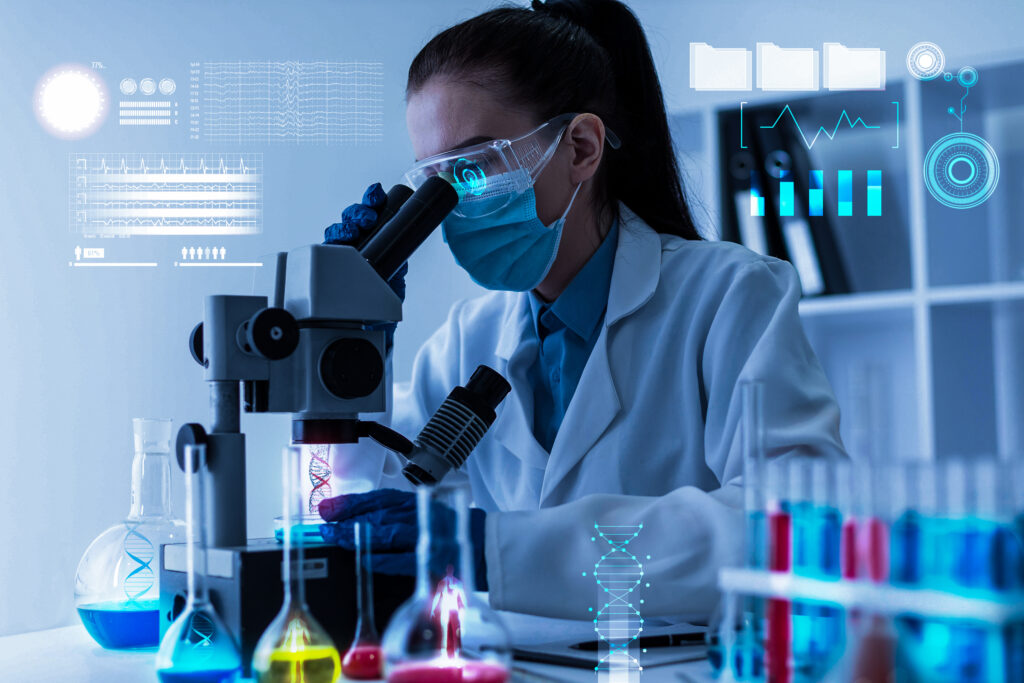Introduction.
Biotechnology is the integration of biology and technology to make new products or improve a process.
Biotechnology is the branch of science that uses living organisms or their derivatives to make new products or processes that are beneficial to humankind.
Scientists harness the power in living organisms and by using certain techniques and tools and then make products that are beneficial to the society.
To become an expert in biotechnology, you should have a deep understanding in the biology of living organism, that means you should have an understanding in the fundamental principles that govern life, it includes how organisms are structured, how they function and how they interact with their surroundings because, Biotechnology seeks to unlock the power of living organisms, their genes, and their metabolic capabilities to solve problems, create innovative products and improve the quality of our life.
“I think the biggest innovations of the 21st century will be the intersection of biology and technology a new era is beginning.
~Steve Jobs.
organisms of potential in Biotechnology.

Certain organisms have been found to possess incredible potential in the field of biotechnology.The most common organisms’ biotechnologists use for their advantage is bacteria, these are some reasons that make bacteria powerhouses of biotechnology.
- Bacteria are simple organisms and are easily manipulated genetically, making them ideal for biotechnological applications.
- Bacteria are single celled yet their incredible ability to produce large amounts of proteins makes them invaluable in various applications of biotechnology.
- Bacteria have rapid growth rates and reproduction rates making them suitable for industrial applications such as fermentation and bioremediation.
- Bacteria are well studied model organisms, so scientists have a deep understanding and extensive knowledge on these microorganisms allowing them to predict and manipulate their behavior with precision.
Example of a biotechnological application of bacteria
Insulin, a hormone used to treat diabetes was produced by genetically engineering bacteria to produce human insulin in 1980ś. This fascinating technique involved isolating the human insulin gene and inserting it into a bacterium, typically Escherichia coli (E. coli) to act as a production factory.
Another living organism that serves a great advantage for biotechnological applications is Yeast, a typical fungus that has been used for many years and used in production of many everyday products.
Did you know that the bread you eat, the beer and wine you drink are products of biotechnology.? Yes, because Yeast is applied in industrial fermentation processes to produce bread and alcoholic beverages beer and wine. The unique metabolic capabilities of yeast allow it to convert sugars into alcohol and carbon dioxide through the process of fermentation. This ability of yeast to efficiently ferment sugars has made it an indispensable tool in bakery, brewing and winemaking industries.
While bacteria and yeast serve a big role in the field of biotechnology, there are also several organisms that play significant roles in this field such as
● Viruses ;(not typically considered organisms); are essential in vaccine production, gene therapy and viral research
● Plants; utilized in biotechnology for various purposes. They can be genetically modified to improve crop yields, nutritional content, or diseases resistance.
● Animal cells; are widely used in production of biopharmaceuticals. These cells offer an accurate cellular environment for production of human-like proteins, making them valuable tools in the biopharmaceutical industry.
History and development of biotechnology.
Recently we are seeing that biotechnology being associated with drug development, but historically the roots of biotechnology lie in the realm of food production.. In fact, biotechnology came from Zymotechnology. Zymotechnology is a German term for the process of fermentation in yeast and bacteria in the production of foods and beverages such as bread, beer, and cheese.
Biotechnology arose from this field as a search for a better understanding of industrial fermentation, particularly beer as beer was an important industrial product that proved to be a significant source of revenue to the government.
In the year 1860 ́s institutes dedicated themselves to the technology of brewing and the year 1875, Emil Christian Hansen was the first to use pure yeast process for the production of consistent beer.
During world war I, Zymotechnlogy came into expansion as industries were needed to support the war. The industrial potential for fermentation was outgrowing its traditional home in brewing and soon Zymotechnlogy would pave a way for biotechnology. With the spreading shortage of food and fading resources, some people dreamed of a new industrial solution that could solve this problem.
In 1919, Karoly Ereky, a Hungarian agricultural engineer, coined the word ¨Biotechnologie¨ to describe the technology based on converting raw materials into a more useful product. Karoly built a slaughterhouse for thousands of pigs and also a fattening farm for pigs, this enterprise was big and became one of most profitable meat and fat operations in the world.
Karoly further developed an idea that could be reiterated through the 20th century: biotechnology could provide solutions to societal crises such as food and energy shortages, to him the term biotechnology indicated a process by which raw material could be biologically upgraded into socially useful products. This word Biotechnology spread quickly after the first world war I, biotechnology reached its highest point of development with the birth of genetic engineering.
There were two significant events that gave breakthroughs in Biotechnology the first was the discovery of the structure of DNA, in 1953 by Watson and Crick by the great contribution of the work of Rosalind Franklin, the second event was the discovery of a recombinant DNA technique by Cohen and Boyer in the year 1973.
Today, biotechnology has evolved and is still evolving with its applications ranging from health, agriculture, industries, and environment, it continues to push the boundaries of scientific knowledge and innovation. Its applications have a great potential to shape our present and future by addressing global challenges and improving the quality of life for the people worldwide.
The purpose of biotechnology.
The world “Purpose” means the original intention of a thing, or a reason for which something exists, or was created.
Now what is the purpose of biotechnology.
you may be wondering, what is the purpose of biotechnology? the purpose of biotechnology is to find innovative solutions to existing problems faced by humanity. Such problems are like;
- Diseases and inadequate treatment ,
- Food insecurity
- Environmental pollution and contamination
- Climate change and fossil fuel depandance
- Inefficiencies in industrial processes.
Scientists harness the power of biological systems and by using different techniques they are able to study how organisms function, and utilize this information to create beneficial products, develop new treatments and mitigate environmental damages making life on planet earth good.
Applications of biotechnology.
Applications of biotechnology range from sector to sector.
1. Health
One of the most exciting applications of biotech is in the field of medicine, it has revolutionized the way we diagnose and treat diseases. By utilizing the potential in living organisms, Scientists have developed techniques to produce lifesaving drugs such as insulin using genetically modified bacteria.
It doesn’t stop from there; biotechnology has brought advanced diagnostic tools that enable pricise, accurate and early detection of diseases. Techniques such as PCR DNA sequencing, and gene expression help in pathogen detection and disease monitoring.
2. Agriculture
In this era of climate change and food shortage, biotechnology has given us the ability to modify crops and give them the ability to resist pests, diseases, and environmental stress.
This results in higher crop yield, reduced use of pesticides and ultimately more food to feed our growing population.
3. EnvironmenT
Our environment provides habitat to all living organism, because of human activities our environment is at risk and endangered with all these activities, for this reason, biotechnology is observed to have a solution to these problems, scientists are using biotechnology to develop sustainable alternatives to fossil fuels such as biofuels made from algae and other renewable sources.
Scientists are working on bacteria that can break down plastic waste, helping to clean up our oceans and landfills.
4. Industry
Industrial fermentation was was the earliest application of biotechnology, until now biotechnology continues to be renowned of its applications in brewing industries, bakery industries.
These are just a few examples of the numerous applications of biotechnology.To learn more about applications of biotechnology consider opening our special article that we have dedicated it to biotechnological applications.
Conclusion.
Biotechnology is a science discipline with great power, it has a big responsibility in ethical considerations. Questions about genetic modification of organisms, cloning and other biotechnological applications, have a great chance to be misused. it is crucial for the policymakers and scientists and the society at large to engage in thoughtful discussions and establish ethical guidelines that will ensure good use of biotechnology for the benefit of all while minimizing potential risks Biotechnology continues to push the boundaries of scientific knowledge and innovation.
Its interdisciplinary nature, coupled with ongoing research and development efforts, promises exciting advancement in coming years, so my fellow explorers together have the power to shape a future where the wonders of biotechnology spread throughout our lives.
Don on your lab coats, sharpen your minds, the future of biotechnology is calling, and it is an invitation we don’t want to miss.


good work
thanks